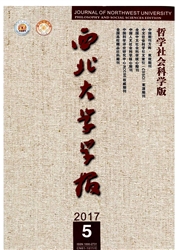

 中文摘要:
中文摘要:
“观音图”及其相关艺术造像是佛教中国化过程当中的重要艺术案例,它既包孕着佛教艺术的基本精神与教义教旨,也渗透了其在异域传播过程当中所必经的艺术改良与审美创造。这种改良与创造,一方面表现为佛教传入中土之后“观音”形象的形式化移植与想象创造,另一方面也体现在对“观音图”所代表的佛教精神与审美内蕴的革新。从审美流变与影响传播的角度看,“观音图”从汉迄宋的形式与内容革新过程,也是观音形象逐渐中国化、世俗化与文人化的过程。而宋代“观音图”传至日本后对日本观音画产生的巨大影响,也应在这一维度中获得解读。
 英文摘要:
英文摘要:
" Picture of Avalokitesvara" and its relevant art statues are important cases in the process of the lo- calization of Buddhism in China, which include the basic spirit and religious doctrine embedded in the Buddhist art and also revealthe art improvement and aesthetic creation during the course of exotic propagation. The art improvement and aesthetic creation represent not only the transmission of the image of " Avalokitesvara" and also the creation of the spirit of Buddhism and aesthetic connotation owned by " Picture of Avalokitesvara". In the view of aesthetic development and effect of transmission, the innovation of " Picture of Avalo- kitesvara "in form and content from Han Dynasty to Song Dynasty is the procedure of localization, seculariza- tion and literati stylization of the image of Avalokitesvara. What's more, the great influence on Japan's painting exerted by "Picture of Avalokitesvara" in Song Dynasty is supposed to be interpreted in this dimension.
 同期刊论文项目
同期刊论文项目
 同项目期刊论文
同项目期刊论文
 期刊信息
期刊信息
